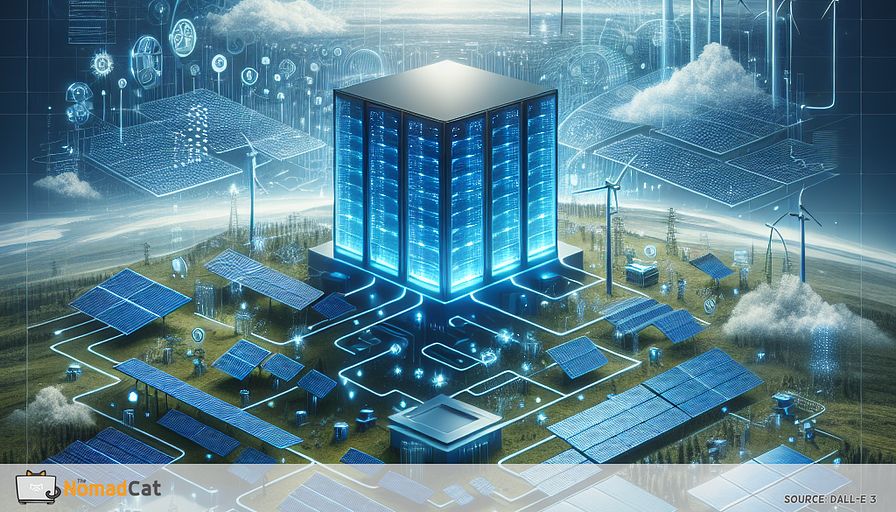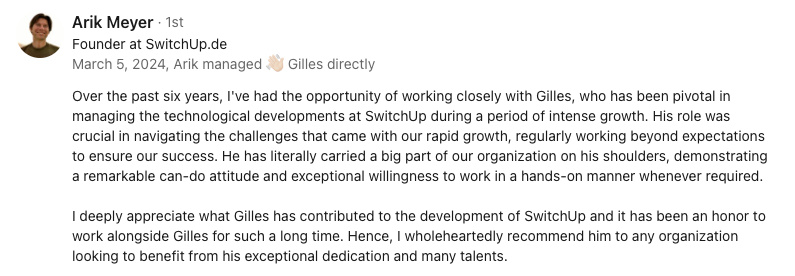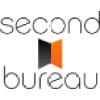Abstract:
The article discusses the energy-intensive nature of data centers, particularly in Europe, and the challenges startups face due to high electricity costs and limited resources. It emphasizes the need for greener solutions to reduce their carbon footprint, highlighting the European Green Deal's regulatory push towards renewable energy. The article explores solar technology as a transformative solution, showcasing innovations like perovskite and bifacial panels, and Building-Integrated Photovoltaics (BIPV), which can make data centers self-sufficient. Success stories from companies like HelioVolt, Green Revolution Cooling, and Nimbus Data demonstrate the benefits of integrating smart solar solutions. These companies use advanced technologies such as AI-driven systems and smart grids to optimize energy use and enhance sustainability. Additionally, the article outlines the supportive regulatory landscape and financial incentives from EU programs that encourage solar adoption. It underscores solar power's role in reducing emissions and increasing efficiency, advocating for strategic planning, partnerships, and optimal location choices to maximize benefits. Ultimately, the shift towards solar-powered data centers presents an opportunity for startups to innovate and lead in the green energy revolution.
Data centers are crucial for our digital world but are heavy energy users, especially challenging for startups in Europe. These centers have a significant carbon footprint, prompting a push for greener energy solutions. Startups face high electricity costs and limited resources, making this shift difficult. Yet, this is also a chance to innovate and move towards a sustainable future. Let's explore how solar technology could transform energy use in data centers.
Addressing energy challenges in data centers
Data centers power our online services but use a lot of energy, contributing to carbon emissions. This is a big issue for European startups trying to grow while managing energy needs. In 2018, EU data centers used about 76.8 TWh of electricity, and this number is only set to rise. Regulations like the European Green Deal are pushing for reduced emissions and more renewable energy. Startups, despite limited resources, have the opportunity to innovate and join the sustainability movement. For instance, companies like Cloud&Heat Technologies have successfully implemented solar technology to reduce both costs and emissions, demonstrating the feasibility of such initiatives.
Financial strain of energy costs on startups
Startups in Europe face high electricity prices, especially in places like Germany and Italy. This impacts their competitiveness and financial health. To address this, startups should consider the following steps to assess and implement solar solutions:
- Conduct an energy audit to identify potential savings.
- Explore partnerships with solar technology providers to reduce initial costs.
- Evaluate government incentives and subsidies for renewable energy adoption.
Although the initial cost is high, these investments can lead to long-term savings. It's about managing upfront costs for future benefits.
The future of solar in data centers
Innovative photovoltaic materials and designs
Emerging technologies like perovskite and bifacial panels are changing how data centers use energy. Benefits include:
- Increased efficiency of perovskite panels over traditional ones.
- Bifacial panels capture sunlight from both sides, maximizing energy without needing more space.
These innovations help data centers optimize energy use effectively.
Building-integrated photovoltaics: a vision for self-sufficiency
Building-Integrated Photovoltaics (BIPV) can turn data centers into self-sufficient power hubs. BIPV replaces traditional building materials with solar panels, helping centers generate their own energy. Successful case studies, such as those implemented by SolarCity, show BIPV's potential to reduce reliance on external energy sources.
Real-world success stories: pioneers in solar-powered solutions
HelioVolt: leading the charge in smart solar integration
HelioVolt shows how smart solar systems can be integrated into data centers, improving energy efficiency and reducing costs. Their approach demonstrates the benefits of embracing advanced solar solutions, with metrics showing a 20% reduction in operational costs.
Efficiency through integration: Green Revolution Cooling and Nimbus Data
Companies like Green Revolution Cooling and Nimbus Data are also making strides. GRC uses AI-driven cooling systems to save energy, while Nimbus Data uses predictive analytics to optimize solar energy use. These initiatives enhance efficiency and sustainability, with specific strategies reducing energy consumption by up to 30%.
Harnessing smart integration systems in solar-powered data centers
Smart grids and AI technologies
Smart grids help optimize energy use in solar-powered data centers by balancing power loads. AI technologies further enhance efficiency with predictive capabilities, anticipating energy needs and maintenance. For example, a case study of Switch Datacenters highlights the use of AI to predict energy consumption patterns, leading to more efficient operations.
Examples of enhanced operational efficiency
HelioVolt and Green Revolution Cooling use smart systems to boost energy efficiency. HelioVolt combines solar panels with smart grids, while GRC specializes in AI-driven cooling. Nimbus Data uses AI to manage solar energy, lowering costs and improving sustainability.
Navigating the regulatory landscape for solar adoption
Understanding key EU sustainability regulations
The EU has set regulations like the Renewable Energy Directive and Energy Efficiency Directive to encourage solar energy adoption. Aligning with these can enhance sustainability and drive renewable energy technology adoption.
Aligning with the EU Green Deal for strategic advantage
The European Green Deal aims for climate-neutrality by 2050. Adopting solar power aligns data centers with sustainability goals, attracting investors interested in environmentally responsible opportunities.
Financial incentives and opportunities for growth
Leveraging EU funding for clean energy projects
EU programs like Horizon Europe offer funding for clean energy projects, reducing the financial burden of solar investments. This support strengthens startups' economic foundations and aligns them with EU sustainability ideals.
National and EU programs as catalysts for solar integration
National incentives and programs like InvestEU provide additional financial support for solar adoption. These resources make solar integration more feasible, reflecting a shared vision to transform the energy landscape.
The future role of solar power
Key developments in energy efficiency and carbon reduction
Solar power will be crucial in cutting data center emissions and boosting efficiency. New solar panels and storage technologies align with reducing carbon footprints, making solar power increasingly important.
Technologies offering competitive advantages
Advances in solar technology and storage provide strategic advantages, reducing costs and boosting sustainability. Strategic planning is key to integrating these innovations for maximum benefits.
Strategic planning for transition
Balancing investments and benefits
Transitioning to solar requires balancing initial investments with long-term benefits, considering future savings and compliance incentives.
Leveraging partnerships and location
Partnerships and location choices enhance the benefits of solar energy. Aligning with sustainability-minded partners and choosing optimal locations can maximize solar advantages.
The shift to sustainable data centers is a chance to innovate and lead. With solar technology, startups can manage energy demands while growing sustainably. Real-world examples show the potential of smart solar integration to cut costs and carbon footprints. Embracing these technologies positions startups at the forefront of a green revolution.
You might be interested by these articles:
- Solar-Powered Desalination Technologies
- Next-Gen Solar Power Innovations
- Revolutionizing Energy with Solar Innovation
See also:
- Gilles Crofils: Skills, Industries and Markets
- VR Therapy for PTSD
- AI transforming healthcare logistics for cost savings and efficiency
- Enhancing Work-Life Balance with Mental Health Apps
- Revolutionizing Work with Immersive Learning
- Laughing with AI: Navigating the Ethical Maze of Artificial Humor in Branding
- The New Frontier in Biotech





